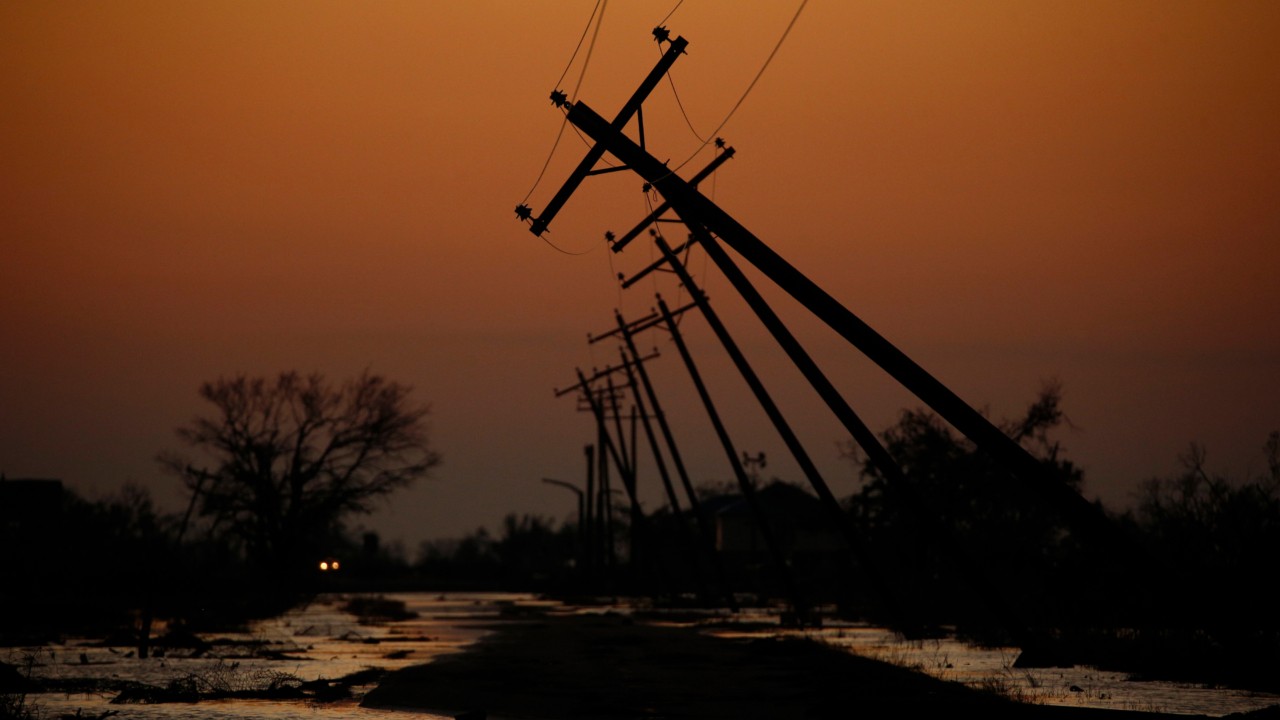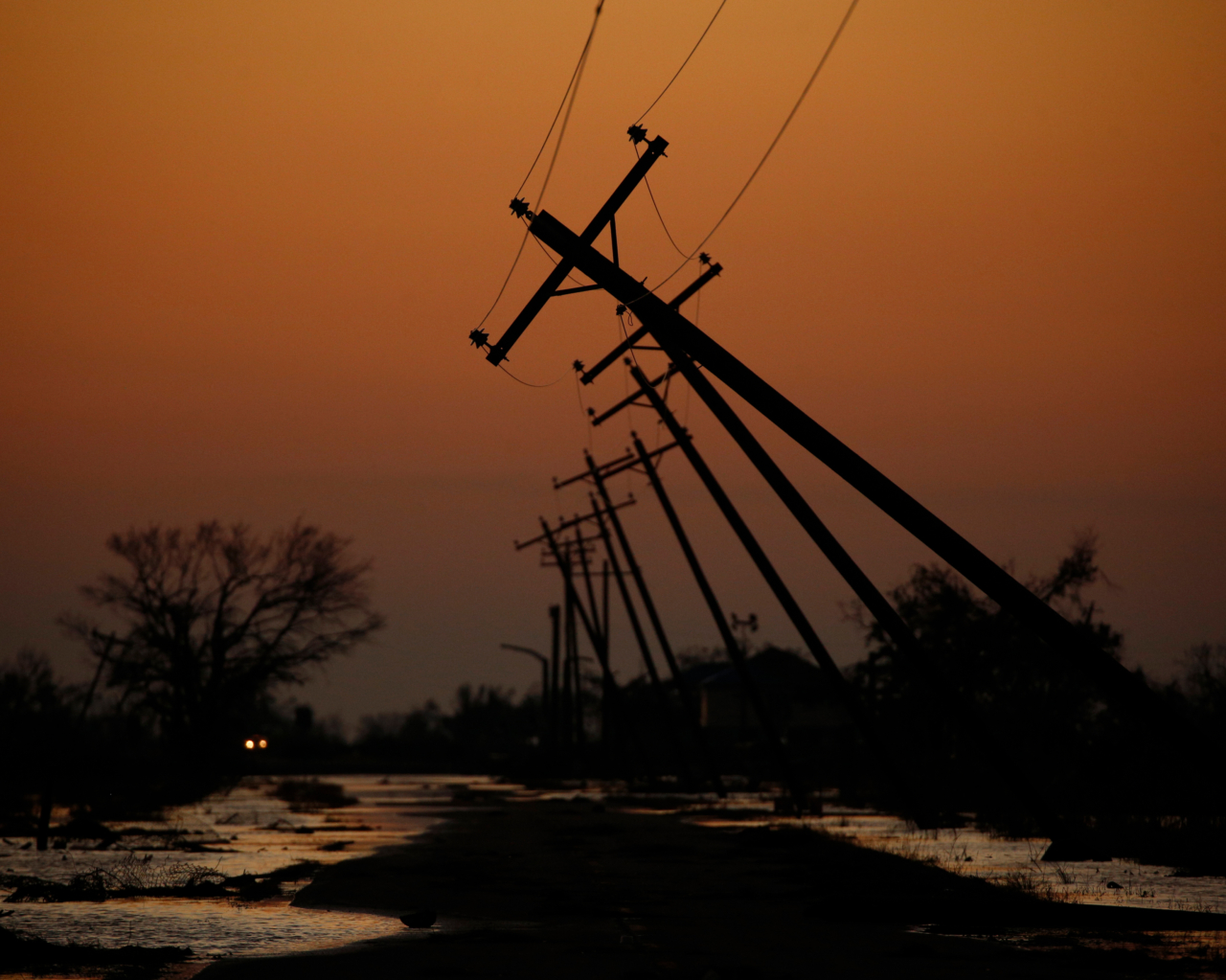

Photograph by Bloomberg Creative / Getty Images
words by miranda green
I want to take you back to a day nearly six years ago, when a hurricane named Dorian was bearing down on the Atlantic coast. Days before it was anticipated to hit land, President Donald Trump tweeted that it was a Category 5 and on track to hit Alabama harder than expected.
Except he was wrong.
Within minutes, officials at the Birmingham National Weather Service issued a statement to ease the growing local panic. No, they said, a hurricane was (thankfully!) not expected to impact the state at all.
That could have been the end of it, but they didn’t have the last word. Days later, Trump held a White House press conference about the storm. Standing in front of cameras, he pointed to an official map of the hurricane’s path outlined in green, showing that it was on its way to Florida and perhaps southern Georgia. But where the printed green line stopped, a hand-drawn extension of the storm’s path, written with black Sharpie, showed it moving into Alabama, just as Trump had tweeted. Soon thereafter, the Department of Commerce, which oversees NOAA and the NWS, rebuked the Birmingham forecasters for contradicting the president.
The event became known as Sharpiegate, a battle of intelligence over whose version of the storm was actually true: Trump’s or weather experts. Dorian never made landfall in Alabama, and it was never revealed who wrote in the fake Sharpie outline, though Trump has a penchant for the writing utensil. Later, the government watchdog agency tasked with overseeing NOAA lambasted the agency for attacking its own forecasters and politicizing a storm. It’s a federal crime to issue a false weather report.
Nevertheless, a lasting point was made: Even weather can be politicized under the Trump administration
This week, as Category 1 hurricanes Imelda and Humberto threaten parts of the Atlantic, meteorologists, storm trackers, and disaster-response teams again find themselves in the lurch thanks to Trump administration policies.
Since the president took office, his administration has:
● Let go of more than 100 probationary employees at NOAA
● Encouraged 500 NWS staffers to take buyouts, retire early, or resign
● Proposed shutting down active satellites that track atmospheric carbon
● Zeroed out funding to NOAA labs in its budget request
● Proposed ending NOAA’s Office of Oceanic and Atmospheric Research, its primary research branch
● Suggested slashing NOAA’s budget by more than 25%
● Eliminated the National Flood Insurance Program, which expired on Tuesday
The NWS, which is under NOAA, has fewer than 4,000 employees for the first time in decades. That has forced the remaining staff to work double shifts and delayed the launch of weather balloons. The changes have also resulted in a 30% staffing loss at NOAA’s Hurricane Research Division, which experts warned Congress could cause a reduction in crewing the Doppler radar of the NOAA Hurricane Hunter that helps track changes in storm systems.
And that doesn’t include suggested cuts and layoffs at the Federal Emergency Management Agency, which is responsible for storm response, or cuts to National Science Foundation grants, some of which studied weather patterns.
The eliminations come as studies find that increased forecast accuracy is saving the U.S. an average of $5 billion per hurricane, and that climate change is driving weather disasters to be more intense and more frequent. For example, forecasters predicted that this year’s hurricane system would be above normal and could bring up to 18 named storms.
While it looks like this week’s storms won’t be devastating, experts tell me the Trump administration has simply gotten lucky so far.
“It’s so far, so good. Fingers crossed. Knock on wood. But that’s not a very good strategy for long-term success when it comes to disasters, right?” Jeff Masters, who previously worked as a hurricane scientist with the NOAA Hurricane Hunters, told me. “Next year, odds are we’ll see a major disaster that will require NOAA to be on top of its game, FEMA to be on top of its game. And when you’re reducing the capabilities, you’re loading the dice in favor of bad outcomes. So these cuts are going to end up killing people.”
Why would the Trump administration want to handicap our weather forecasters? Some of the answers appear in the Project 2025 playbook, which vilified NOAA’s Office of Oceanic and Atmospheric Research as “the source of much of NOAA’s climate alarmism.”
During his first term, Trump also evangelized about how the government shouldn’t play a role in collecting and disseminating the weather—that it should instead be privatized. Privatizing weather would make millions for companies that would then be the gatekeepers of weather forecasts and could charge steep fees for the information.
Trump’s first pick to lead NOAA back in 2017 was Barry Myers, the former CEO of Accuweather, who had similarly pushed for privatizing weather data (which I revealed at the time). He was also involved in a harassment settlement. Myers ultimately removed himself from consideration for the NOAA role due to health reasons after the Senate stonewalled his nomination for two years, but he was a named author on Project 2025, where he contended that private companies offer more reliable forecasts than the NWS.
Accuweather has since come out against “fully commercializing” weather, but it still feels like what’s old is new again.
Trump’s nominated NOAA Administrator Neil Jacobs held the role of acting NOAA administrator during Trump’s first term, where he was found to have violated the agency’s scientific integrity policy during “Sharpiegate” for allowing the agency to issue a deliberate false statement.
With the added challenge of a government shutdown, which officially started today, NOAA employees deemed essential will have to continue to work overtime, but for no pay. And other key elements tracking the storms or climate change might also disappear, like they did during the last shutdown, as I reported back in 2019. I’ve found shutdowns make for a convenient timeline to remove inconvenient metrics
While NOAA has lost a significant portion of its staff, Congress is essentially rejecting the White House’s budget. It’s helpful—and devastating—that the Texas floods that killed at least 135 people this summer have highlighted the need for timely and accurate weather forecasting and response.
The Trump administration in August quietly made moves to reverse the cuts and approve the rehiring of 450 employees at NWS. Masters says the administration is going to have a hard time finding candidates who want to rejoin the federal government, considering the lack of stability, the mandate that employees take a loyalty test, and that the administration is still determined to remove climate change from the equation.
“You can’t separate out climate change research from weather research,” he said.
Twin Disasters Are Leaving Forecasters in the Lurch